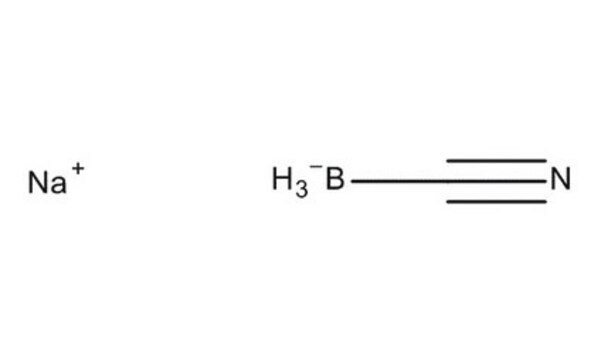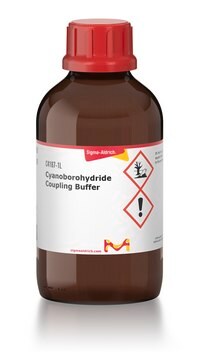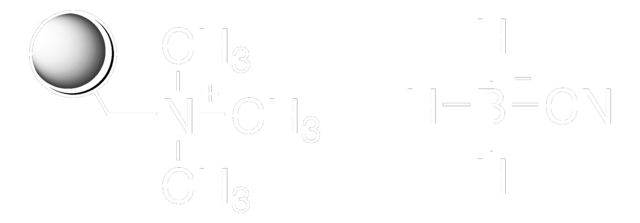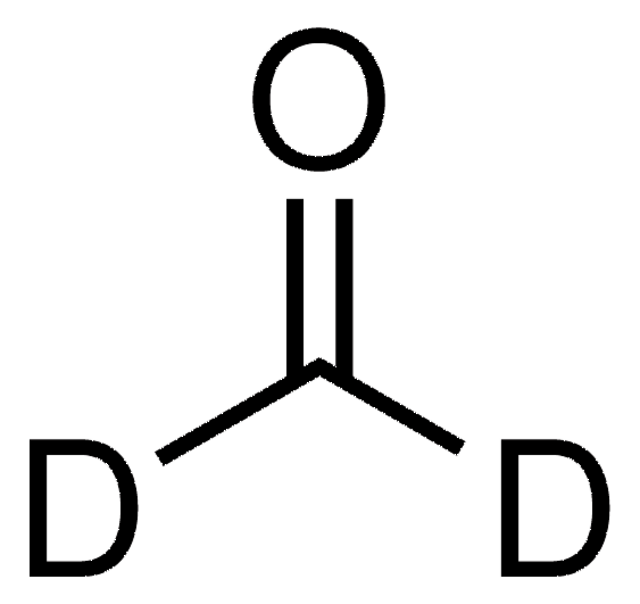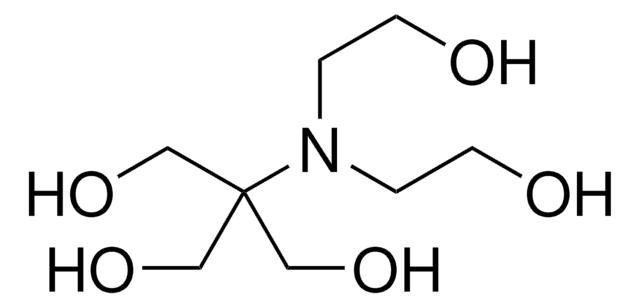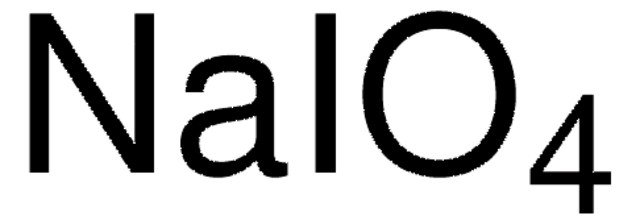296945
Sodium cyanoborohydride solution
5.0 M in 1 M NaOH
Synonym(s):
Sodium borocyanohydride, Sodium cyanoborohydride, Sodium cyanotrihydroborate
About This Item
Recommended Products
reaction suitability
reagent type: reductant
concentration
5.0 M in 1 M NaOH
density
1.083 g/mL at 25 °C
SMILES string
[Na+].[H][B-]([H])([H])C#N
InChI
1S/CH3BN.Na/c2-1-3;/h2H3;/q-1;+1
InChI key
CVDUGUOQTVTBJH-UHFFFAOYSA-N
Looking for similar products? Visit Product Comparison Guide
Related Categories
General description
Application
- Direct conversion of heterocyclic aldehydes to esters (oxidizing behavior)
- Reductive amination reactions
- Intramolecular reductive cyclization reactions
- Reductions reactions
- Preparation of dicyanoborate-based ionic liquids as hypergolic fluids for bipropellants
Signal Word
Danger
Hazard Statements
Precautionary Statements
Hazard Classifications
Acute Tox. 2 Dermal - Acute Tox. 2 Inhalation - Acute Tox. 2 Oral - Aquatic Acute 1 - Aquatic Chronic 1 - Eye Dam. 1 - Met. Corr. 1 - Skin Corr. 1B
Supplementary Hazards
Storage Class Code
6.1B - Non-combustible acute toxic Cat. 1 and 2 / very toxic hazardous materials
WGK
WGK 3
Flash Point(F)
Not applicable
Flash Point(C)
Not applicable
Choose from one of the most recent versions:
Already Own This Product?
Find documentation for the products that you have recently purchased in the Document Library.
Customers Also Viewed
Our team of scientists has experience in all areas of research including Life Science, Material Science, Chemical Synthesis, Chromatography, Analytical and many others.
Contact Technical Service
